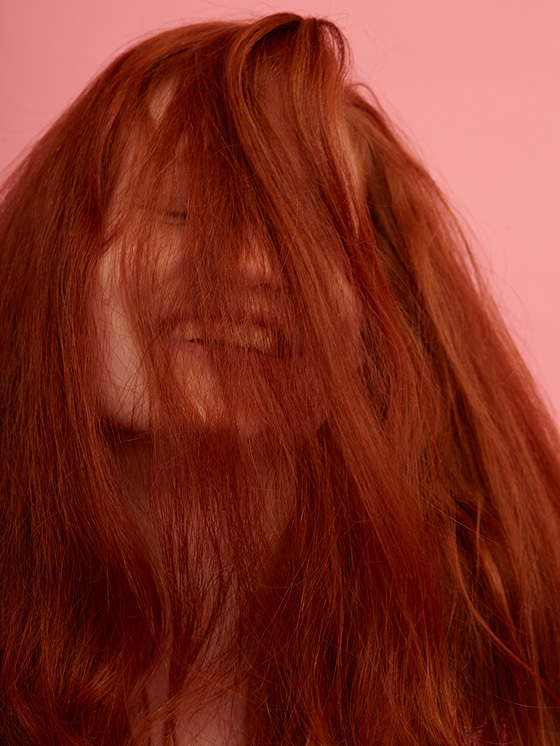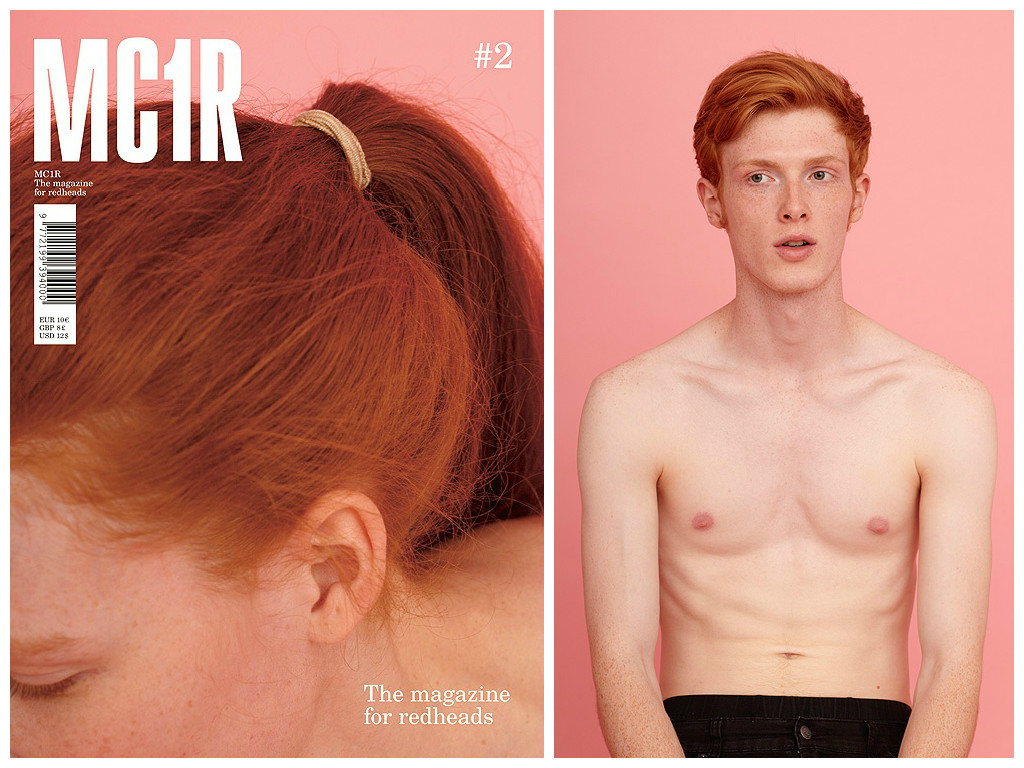Steven Meisel seems to have a thing for redheads. The iconic photographer shot Karen Elson on her 18th birthday back in 97, the very same year he photographed fellow flame haired mega model Maggie Rizer’s breakout cover editorial for Italian Vogue. Earlier this year, Meisel even shot our favorite scarlet starlet, Natalie Westling, for Prada’s pre-fall 15 campaign. But despite this solid representation in the fashion industry, redheads only comprise about 2% of the world’s population, making them a minority in virtually every country and culture.
It’s this scarcity — and specialness — that led Tristan Rodgers to launch MC1R, an independent art and design magazine about the culture of red hair, named after the gene that yields crimson tresses. As he prepares to launch MC1R‘s third issue later this year, we catch up with the Hamburg-based lighting design student (and redhead himself) to find out how he’s changing the way we see reds.

What led you to launch MC1R?
It started as a photography project with a small group of friends who all have red hair, too. After a while, the project expanded and more redheads joined, so I collected their stories while shooting photographs. My interests in photography, design concepts, art, and independent print magazines developed even further, so out of curiosity, I looked into how much it would cost to print a few private copies of this collected work as a small magazine for everybody who had been part of the project. It turned out that the print cost for 20 copies was very close to that of 500 copies, so I started a crowdfunding campaign to see whether anyone else would be interested in reading something like this. There were more than enough pre orders, so I was able to print 1600 copies of the first issue.

How do seek out stories or subjects? What inspires you?
I contact the artists who I’d really love to feature, for example Giovanni Lipari or Jens Kaesemann, who shot the cover and some larger editorials in the current issue. I also receive submissions directly from artists, or friends will recommend others they’ve found on social media. I get inspired from the feeling I have as a redhead myself and how it connects me to great quality work. Even when the submissions aren’t the best or are too similar to pieces I’ve already run, I always try to send back feedback to the artist. When I’ve finished initial selections, I discuss everything with Max Weinland, MC1R‘s layout editor, and my good friends Patricia and Lenard who are redheads with strong opinions.

What have you learned about redhead culture?
A lot! I discovered that there’s a big network of and for redheads emerging around the world, and I’m now a part of this movement. People really connect at redhead festivals; they share what they’ve made or their experiences–it’s big, positive hype right now. Some people argue that focusing on the hair itself is a paradoxical method, but if people are identified by the way they look, making work about it allows artists to represent themselves and create a positive feeling for everyone. Someone else in a different part of the world might have problems with his appearance, so creating something positive could help him find strength.

How does redhead culture differ in different parts of the world?
The Irish Redhead Convention will be the first of many redhead festivals I’m going to visit this year. I discovered a strong art scene full of projects and events in the US, UK, Canada, the Netherlands, Southern Africa, Australia, Italy, Ireland, Israel and Germany. While there aren’t overwhelming differences, I have noticed that in England, projects are more motivated to change society’s negative vibe about redheads into something more positive.

Speaking of, I love Harley Weir’s redhead series. Who are some other photographers, past or present, that have documented redheads in a compelling way?
It’s funny: Lily Inge — a model in Harley’s redhead series and friend of mine — recommended Harley for the next issue. I’m still trying to connect, so I hope she reads this interview; her work is really amazing! But there are lots of photographers who have created great series. Jacky Colliss Harvey explored the history of reds in a book she published just a few weeks ago. Thomas Knights got a lot of attention for RED HOT, an anti bullying campaign of sexy looking redhead guys that went viral. I really like Alina Asmus‘ fashion series with Kianne, and Michelle Marshall has one of the most special series about the MC1R gene. Also, Nurit Benchetrit from Israel shot about 200 redheads — it’s really really amazing work but was never published, so I plan to feature it in our next issue. Our current issue features 20 artists, and the next will feature around 36 international stories, interviews and photography series. There are so many established and emerging artists around the world, and that’s why I created this magazine: I’d love to show all of their work and give them the space they need.
What are your hopes for MC1R‘s future?
I hope I can keep up the quality of the magazine and make it even better. Of course I hope to get enough readers to push it into profitability, but this project is a matter of heart — I will always work on it.
Credits
Text Emily Manning
Photography Jens Kaesemann for MC1R
